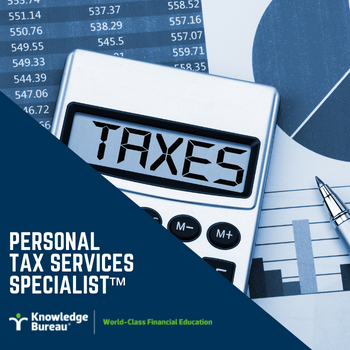Last updated: September 20 2022
GAAR Changes: Will You Meet September 30 Consultation Deadline?

An important discussion is taking place in Canada and tax professionals will not want to miss their chance to weigh in by the September 30 consultation deadline. Specifically, the federal government wishes to “modernize” the GAAR – General Anti Avoidance Rules - after a series of 24 losses in court. Here are the issues:
Since GAAR was first introduced in 1988 until March 2021, CRA considered GAAR at the audit stage in about 1,600 cases and applied GAAR in 80% of those cases. GAAR is lucrative for the government: over the last 6 years (fiscal years 2016 to 2021), $4.1 billion of "tax earned by audit" was assessed using the GAAR (as either the primary or the alternative assessing position).
GAAR is not intended to interfere with legitimate tax planning; rather just to abusive situations that intend to abuse a particular tax provision or the Income Tax Act as a whole. Under current rules, the CRA, in applying GAAR, may determine the amount assigned to any tax attribute with a notice of determination but not until the tax attribute has been realized.
A 2018 Federal Court of Appeal decision (Wild) held that the GAAR did not apply to a transaction that resulted in an increase in a tax attribute which has not yet been utilized to reduce taxes (in other words, there was no immediate tax benefit of the transaction). Subsequent cases have followed this reasoning.
The government believes these rulings run counter to the policy underlying the GAAR and the notice of determination rules. It now proposes that the Income Tax Act be amended to provide that GAAR can apply to transactions that affect tax attributes that have not become relevant to the computation of tax in real time. These changes would apply to notices of determination issued after on or after April 7, 2022, with the result that CRA could weigh in and determine adjusted cost base valuations any time after April 7, 2022, for example, without having to wait until the property is sold.
A 46-page Consultation Paper was released on August 8, 2022. Among the issues to be considered is the introduction of an “economic purpose” test, which, if not met, will automatically result in GAAR being applied.
In addition, an important shift in the onus of proof is being considered: the taxpayer will need to prove the transactions entered into are consistent with the object, spirit and purpose of the provisions in the Act. Previously, that onus was on the government.
The government is also considering increasing penalty provisions that could be charged by the CRA to include:
- a penalty based on a percentage of the tax benefit;
- increasing the interest rate on taxes in dispute under a GAAR assessment; and
- extending the reassessment period for GAAR assessments.
Comments are invited until September 30 to the Department of Finance Canada, Tax Policy Branch at GAAR-RGAE@fin.gc.ca. A summary of the consultation questions provided in the consultation paper follows.
Bottom Line: Tax professionals who have concerns about the direction of the government’s intentions or wish to comment on their experience with GAAR to provide wisdoms for future improvements should consider commenting on the fifteen questions. It’s important, because when passed these changes could significantly increase tax disputes, and for the taxpayer it will be time-consuming and costly.
Summary of Consultation Questions
Tax Benefit
- Are there any changes to the wording of the "tax benefit" definition required in order to ensure that it applies appropriately?
- Note: A "tax benefit" is defined as a reduction, avoidance or deferral of tax or other amount payable under the Act, or an increase in a refund of tax or other amount under the Act (including in cases involving a tax treaty).
Avoidance transaction: mixed purpose transactions
- Should the definition of "transaction" be extended to include certain choices and if so, which choices ought to be included?
- Which, or which combination, of the alternatives discussed (in the consultation paper) is most appropriate for ensuring that the GAAR is effective in preventing abusive tax avoidance?
- Are there other alternatives for achieving this objective?
Misuse or abuse: determining object, spirit and purpose and general schemes
- Do respondents have comments or suggestions on ways to clarify the object, spirit and purpose of provisions of the Act?
- Do respondents have comments or suggestions on ways to improve the interpretive process under subsection 245(4) by, for example, adding targeted interpretive rules or changing the burdens and standards of clarity established by the courts?
- With respect to potentially changing the burdens and standards of clarity established by the courts, in which circumstances would it be appropriate to change them and how might the current clarity standard be modified, recognizing the complexity of the Act?
- Regarding the objectives of certainty, predictability and fairness (including the broader notion of fairness), do respondents have comments or suggestions on how best to maintain an appropriate level of, and balance among, certainty, predictability and fairness?
Economic substance
- Do respondents have suggestions as to how economic substance should be defined for the purposes of a GAAR analysis?
- Do respondents have views on what should be the appropriate consequences when a transaction is found to be lacking in economic substance?
- Do respondents have views on how best to integrate an economic substance test into the GAAR?
- If an economic substance test is integrated into the misuse or abuse analysis, do respondents have views on how best to accommodate transition and minimize disruption with respect to existing jurisprudence?
Penalties and other deterrents
- Do respondents have views on the optimal design of a penalty or other rules intended to provide a sufficient deterrent to abusive tax planning?
Conclusion
- Has the application of the GAAR lead to any other issues that have produced inappropriate outcomes?
- Do respondents have any other comments or suggestions on ways to modernize the GAAR?
